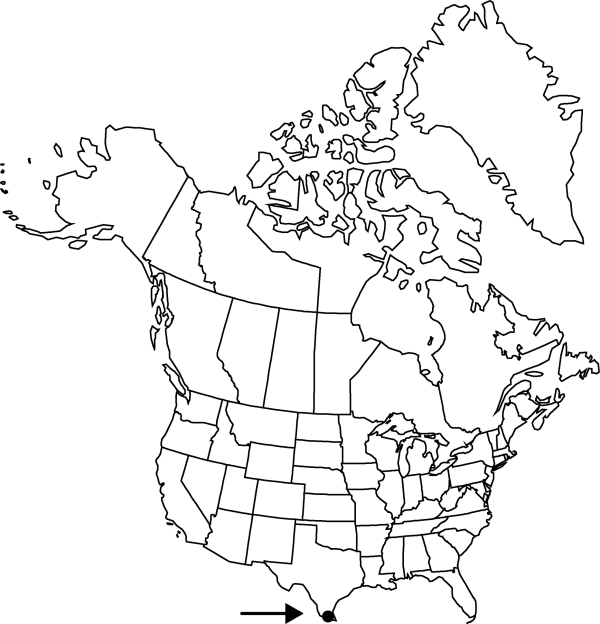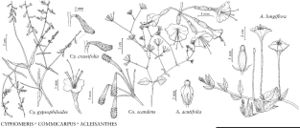Cyphomeris crassifolia
Contr. U.S. Natl. Herb. 13: 428. 1911.
Basionym: Senkenbergia crassifolia Standley Contr. U.S. Natl. Herb. 12: 373. 1909
Revision as of 22:24, 16 December 2019 by FNA>Volume Importer
Herbs, finely pubescent with pale, curved hairs (rarely capitate-glandular). Stems ascending to trailing, 5–20 dm. Leaf blades rhombic to ovate or broadly oblong, proximal blades 10–50 × 8–40 mm, proportionately about as wide as distal blades, margins usually sinuate, often undulate, pubescent. Perianths pale pink to deep pink or red-violet [greenish white], 6–8 mm. Fruits notably gibbous, 6–8[–11] mm, usually prominently warty at least on gibbous side.
Phenology: Flowering late spring–fall.
Habitat: Fine or rocky soils, flats, washes, slopes, roadsides, desert to semiarid or subtropical scrub
Elevation: 0-100[-2000] m
Distribution

Tex., ne Mexico (Coahuila, Nuevo León, Tamaulipas).
Discussion
Selected References
None.
Lower Taxa
None.
